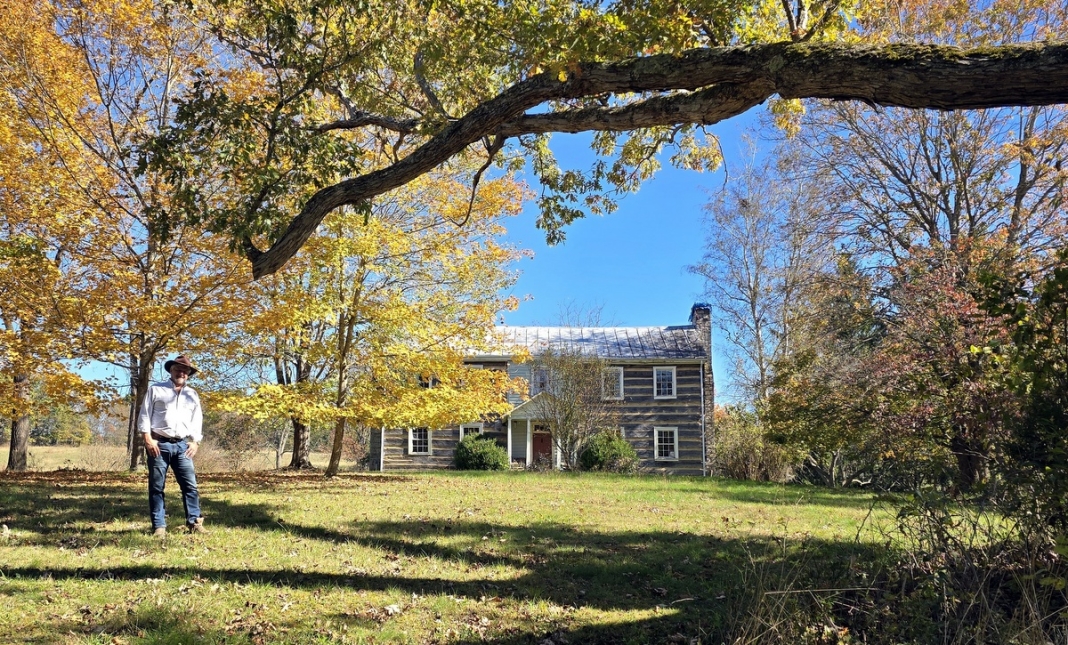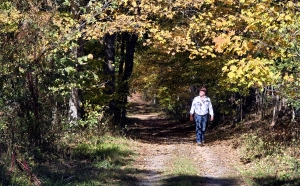WHITE SULPHUR SPRINGS, W.Va.— The scenic Greenbrier Valley in southern West Virginia was among the early large-scale resort communities in the U.S. and featured a state-supported road system designed to lead travelers from resort to resort.
Though colonial farmers were the region's first inhabitants in the 1700s, by the early 1800s, the area had become a tourist destination, according to David Sibray, the publisher of West Virginia Explorer Magazine and a real estate agent marketing historic properties in the region.
"When people think of West Virginia, they may first think of coal or oil, but they should be thinking about tourism and its scenic and water resources," says Sibray.
"Travel and tourism was the lifeblood of many parts of what's now West Virginia. Not only here in the Greenbrier Valley, but across the state, entrepreneurs were marketing the pleasant mountain climate and the alleged healing powers of its mineral springs."
As early as the 1740s, George Washington and his family were visiting the "warm springs" at Bath, now better known as Berkeley Springs. By the turn of the 19th century, resorts were being established at points as far-flung as Mineral Wells near the Ohio River.
"The mountains were ideal for high-end development," Sibray said. "Here, you could escape the oppressive heat of the southern states. Visitors afflicted with illnesses sought health at mineral springs at which they believed they could be relieved of diseases that we now treat through modern medicine."
The pleasant climate and promise of healing attracted thousands of visitors to the Greenbrier Valley in the warm months, where mineral springs were perhaps more common or better marketed.
"Aside from the presence of these old resorts at such places as Blue Sulphur Springs, White Sulphur Springs, Red Sulphur Springs, and Salt Sulphur Springs, there remains a network of roads that led among these destinations," he said.
Sibray said he is currently marketing three historic properties associated with the White & Salt Sulphur Springs Turnpike Co. and the Mountain Lake & Salt Sulphur Springs Turnpike Co.
Two of these, now for sale, the Salt Sulphur Springs itself, near Union in Monroe County, and the Level Tavern at Organ Cave in Greenbrier County, served the traveling populace.
"The Virginia Assembly acted to incorporate these turnpike companies, and though these turnpikes certainly served local farmers and other inhabitants of the area, their purpose was also to provide access to the resorts that developed around the springs."
The above-mentioned roads that linked resorts at Mountain Lake with those at White Sulphur Springs and Salt Sulphur Springs are two of many historic routes. Similarly named turnpikes to Blue Sulphur Springs and Red Sulphur Springs still exist.
"It's astonishing to me, and it only dawned on me as I began to burrow into this history what an industry it had been. It not only supported the springs, it supported tavern owners along those and farmers who supplied produce, and folks who worked at the springs."

Sibray said that as West Virginia moves toward the 21st century, he expects tourism destinations such as Salt Sulphur Springs to reassert their importance. While, he said, the old resorts may not become major employers, though The Greenbrier at White Sulphur Springs has remained so, the state's streams and pleasant weather will attract investment as remote-work opportunities grow.
"Thanks to increasing broadband infrastructure and the burgeoning Starlink network, we in the real estate business expect to see more investors arriving to help build the state into an attractive economic destination," he said.
Sign up to receive a FREE copy of West Virginia Explorer Magazine in your email twice weekly. Sign me up!





